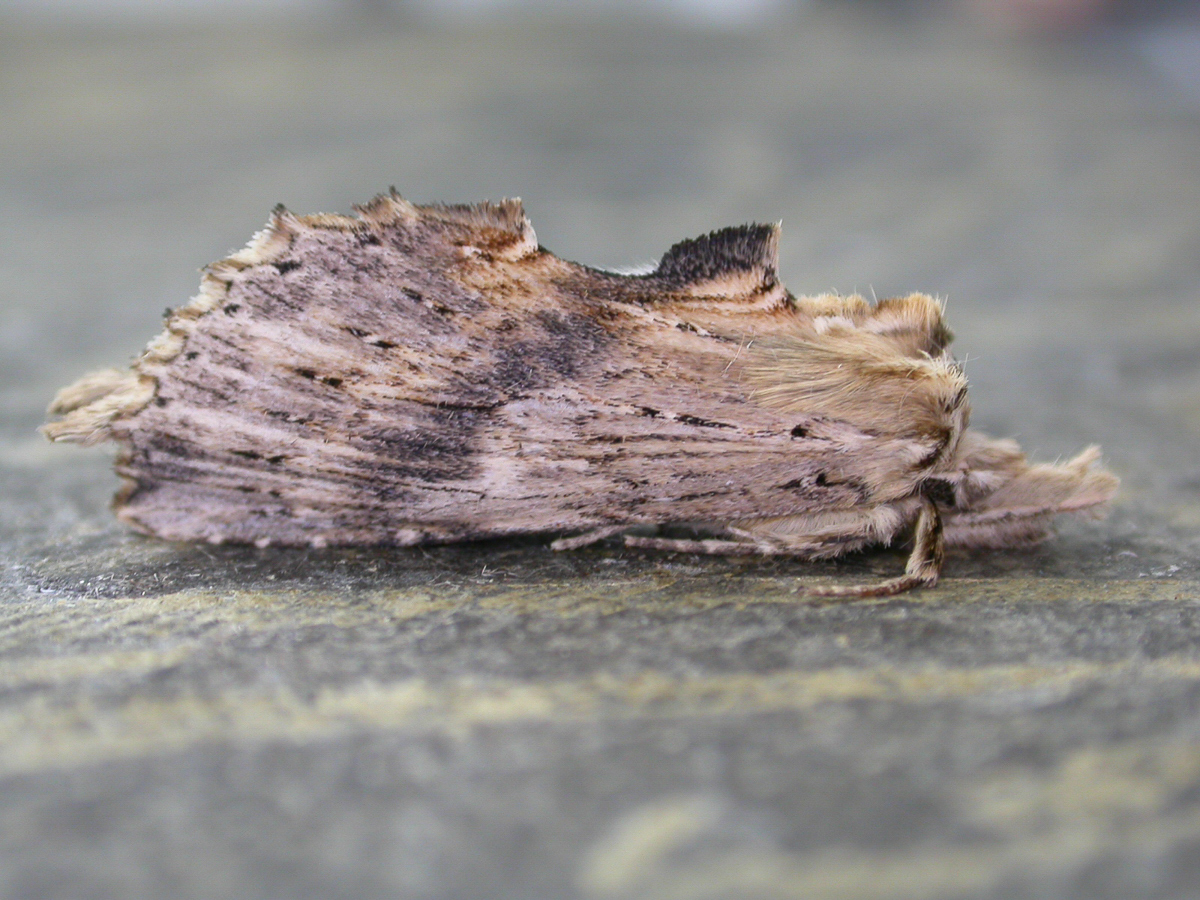
Photo © Andy Mitchell
Pterostoma palpina, the pale prominent, is a moth from the family Notodontidae. The species was first described by Carl Alexander Clerck in 1759.
The moth can be found in Europe and Central Asia (Palearctic realm).
Pterostoma palpina has a wingspan of 35 to 52 mm. Beyond the black scaled tooth-like forewing projection the inner margin is notched. Long labial palps and tufts on the tail segment, give an elongated appearance. The antennae of the female are pectinated, but the teeth are shorter than those of the male; and the blackish streak on the wings are usually less defined. Except that some specimens are more strongly marked than others there is little variation. The larva is bluish green, with white dorsal and lateral lines, and a black edged yellow stripe along the spiracles; this stripe is marked with reddish on the three anterior segments.
The moth survives winter as a pupa. The imago looks like a piece of wood and the flying period ranges from the start of April to the start of September.
The host plants are willows and poplar.
Source: Wikipedia
The primary larval foodplants are Aspen (Populus tremula), poplars (Populus spp.) and willows (Salix spp.).